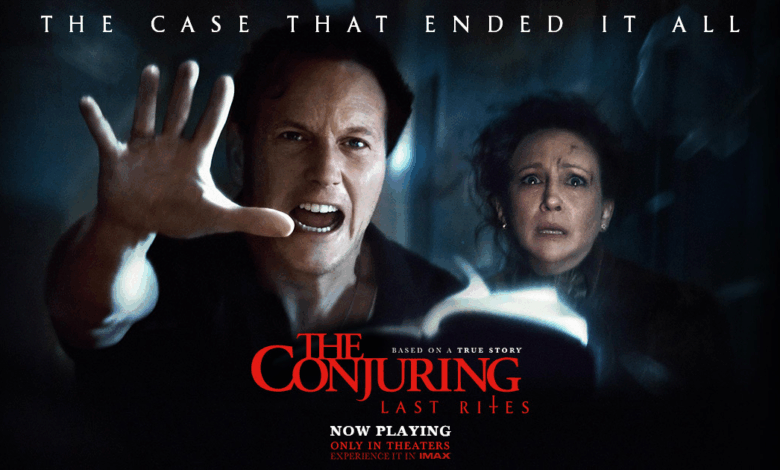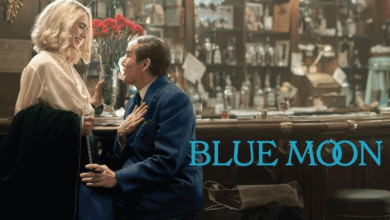The Conjuring: Last Rites

When Reality Becomes Scarier Than Fiction
The world of The Conjuring has always lived on a fragile border between belief and fear — a border we’re never sure truly exists or is simply born in our own minds. With the release of The Conjuring: Last Rites, James Wan and his creative team once again prove that terror doesn’t always come from monsters or gore; it often comes from faith, guilt, and the invisible forces we carry within ourselves. This film serves both as a continuation of the beloved franchise and as a return to its roots — to a kind of horror that whispers instead of screams.
A Story That Plays With Truth
The film opens with a familiar sentence: “Based on a true story from the files of Ed and Lorraine Warren.” That line alone is enough to make the viewer enter the movie already half-believing. Last Rites dives into one of the couple’s most unsettling cases — the haunting of the Smurl family in 1980s Pennsylvania. The movie smartly balances documentary realism with gothic horror, allowing nightmares to slowly merge with reality. We’re never sure if what we’re seeing is supernatural or simply the product of a mind unraveling under fear. As the story unfolds, the question becomes less about whether ghosts exist, and more about how belief itself can summon them.
Crafted Fear
Technically, Last Rites is one of the most finely made horror films of recent years. Directed by Matthew Patrikios, it uses light and pacing as its sharpest tools. The horror doesn’t explode onto the screen; it seeps into you, scene by scene. The yellow-grey palette, the muffled sounds, the claustrophobic interiors — everything builds a psychological pressure that feels far more real than any jump scare could.
The film also shows restraint in its use of visual effects — something that has become rare in recent Hollywood horror. Every flicker, shadow, and breath of air feels organic. The fear comes from the space itself, not from digital tricks. That restraint makes the movie more immersive, because it trusts atmosphere over spectacle.
Faith as Fear
One of the most interesting aspects of The Conjuring: Last Rites — as with the whole series — is the way it connects faith and fear. Lorraine Warren (played by Vera Farmiga) walks a delicate line between her religious devotion and her terror of the supernatural. She truly believes in good and evil, but throughout the film we see how fragile that belief can be.
In a way, the movie reminds us that fear is the child of faith. The stronger the belief, the deeper the dread when it’s tested. That’s why Last Rites doesn’t rely only on loud noises or demonic faces; it uses silence, prayer, hesitation, and guilt to make us tremble. The real horror isn’t what hides in the attic — it’s the realization that our faith may not be enough to protect us.
When “True Story” Becomes a Spell
Perhaps the most fascinating part of The Conjuring: Last Rites is the power of its claim to truth. Even when we know that much of the story has been dramatized, the phrase “based on real events” keeps pulling us in. We want to believe it’s true, because that makes the fear personal.
This is where the film transcends entertainment and becomes an experience. When horror feels possible, it lingers. Wan and his team understand this perfectly: they don’t need to prove that ghosts exist — they only need to make us wonder what we’d do if they did. The Smurl haunting may forever remain disputed, but for two hours, Last Rites convinces us that truth and terror might be the same thing.
Performances That Humanize Horror
Vera Farmiga and Patrick Wilson, the soul of the Conjuring universe, once again deliver performances grounded in empathy. Farmiga, especially, carries the emotional weight of the film. In her quiet moments, she makes fear visible without a single scream — just a flicker in her eyes, the pause before a prayer. She’s a woman who knows that seeing hell has a price, and she’s already paying it.
Wilson, as always, provides the counterbalance — the rational believer who tries to explain the inexplicable. Together they embody the heart of the series: love tested by darkness, devotion trembling under the weight of the unknown.
Fear That Doesn’t End With the Credits
Even when the story appears resolved, the film refuses to release us. The final minutes are haunting in a quieter, more unsettling way. As the credits roll, we see real photographs of the Smurl house, newspaper clippings, and old recordings. Just when you think you’re safe, the movie whispers: Maybe it’s still happening.
It’s a perfect closing gesture — proof that The Conjuring: Last Rites understands the psychology of fear. True horror doesn’t fade when the lights come up; it echoes, long after you’ve left the theater.
Conclusion
The Conjuring: Last Rites proves that this franchise still knows how to terrify without losing its soul. It’s smartly constructed, technically polished, and emotionally resonant. The film’s greatest success is not in making us jump, but in making us believe — or at least, doubt our disbelief.
Because in the end, fear is not about what hides in the dark. It’s about the tiny, lingering thought that maybe, just maybe, it was never fiction at all.
And even as the credits fade, the unease remains — as if the movie itself refuses to let go.




